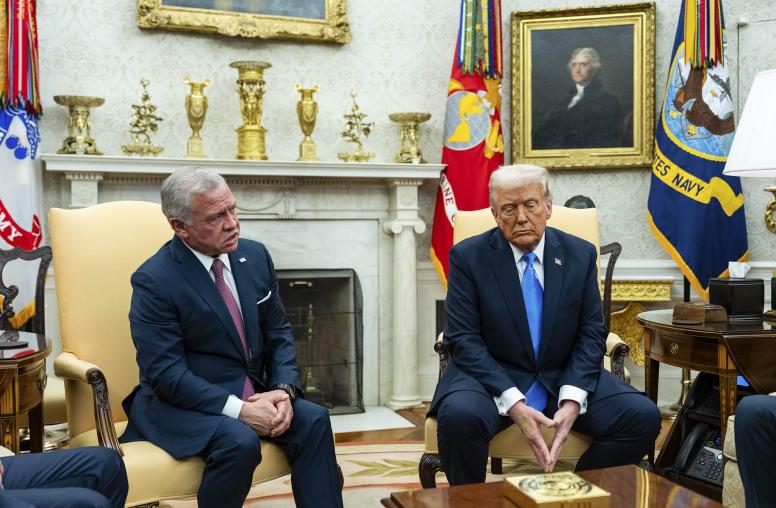President Trump took many watchers of the Israeli-Palestinian conflict by surprise with his Feb. 15 statement that he’s “looking at two-states and one-state” and would support a solution “that both parties like.” While the President later affirmed his support for the decades-long U.S. goal of a two-state solution, his openness to a different outcome has renewed interest in whether alternatives exist that can meet the national aspirations of Israelis and Palestinians. One model that has garnered attention addresses several core demands, but may create other hurdles in the process.

Dahlia Scheindlin, a polling expert and political consultant, and Dov Waxman, a professor at Northeastern University, outlined the model, known as confederation, in an article last year. The concept is not a full departure from two states. In a March 7 discussion at USIP, Scheindlin even referred to the idea as the two-state solution 2.0.
At its core, the model calls for two independent, sovereign states that mutually agree to create a voluntary political association with:
- Open borders and freedom of movement for both sides.
- A distinction between citizenship and residency. Palestinians could live on the Israeli side, and vice versa, but citizens of each side would retain national voting rights only in their own state.
- A unified Jerusalem as the capital of both states.
- Joint authorities on such issues as resource management, water, waste and the environment.
- Jointly managed security, building on the security cooperation that exists today in the West Bank between Israel and the Palestinians.
An intriguing aspect of the model is its potential to resolve the most difficult aspects of previous negotiations toward a two-state solution: the right of return for Palestinian refugees, the status of Jerusalem and the evacuation of Jewish settlers from the West Bank. On each of these issues, the confederal model builds in flexibility aimed at replacing the all-or-nothing equation that has caused former processes to fail.
For its supporters, the model addresses a core demand of both sides in a way that classic partition cannot, by eliminating the hard border and thus allowing both Israelis and Palestinians access to their “homeland.” As former Palestinian negotiator and Brookings Fellow Khaled Elgindy noted at the USIP event, confederation offers a “…fresh approach, given its creative treatment of territory and nationality.”
Yet the proposal also provides openings for spoilers on both sides who could take advantage of the open borders to conduct attacks, and it would have to overcome some major hurdles, such as a deep lack of mutual trust. Mike Yaffe, USIP’s vice president for Middle East and Africa programs, said in the discussion that the challenges posed by confederation far outweigh the difficulties of continuing the relentless pursuit of a firm partition into two states.
In an environment in which declining numbers of Israelis and Palestinians continue to believe in a two-state solution (55 percent of Israelis and 44 percent of Palestinians, down from 59 percent and 51 percent six months ago, according to a February poll), a consideration of alternatives has the potential to unlock creative thinking for moving beyond the current stalemate. It also might convince the parties that the two-state solution actually is the most viable and most realistic option after all.



